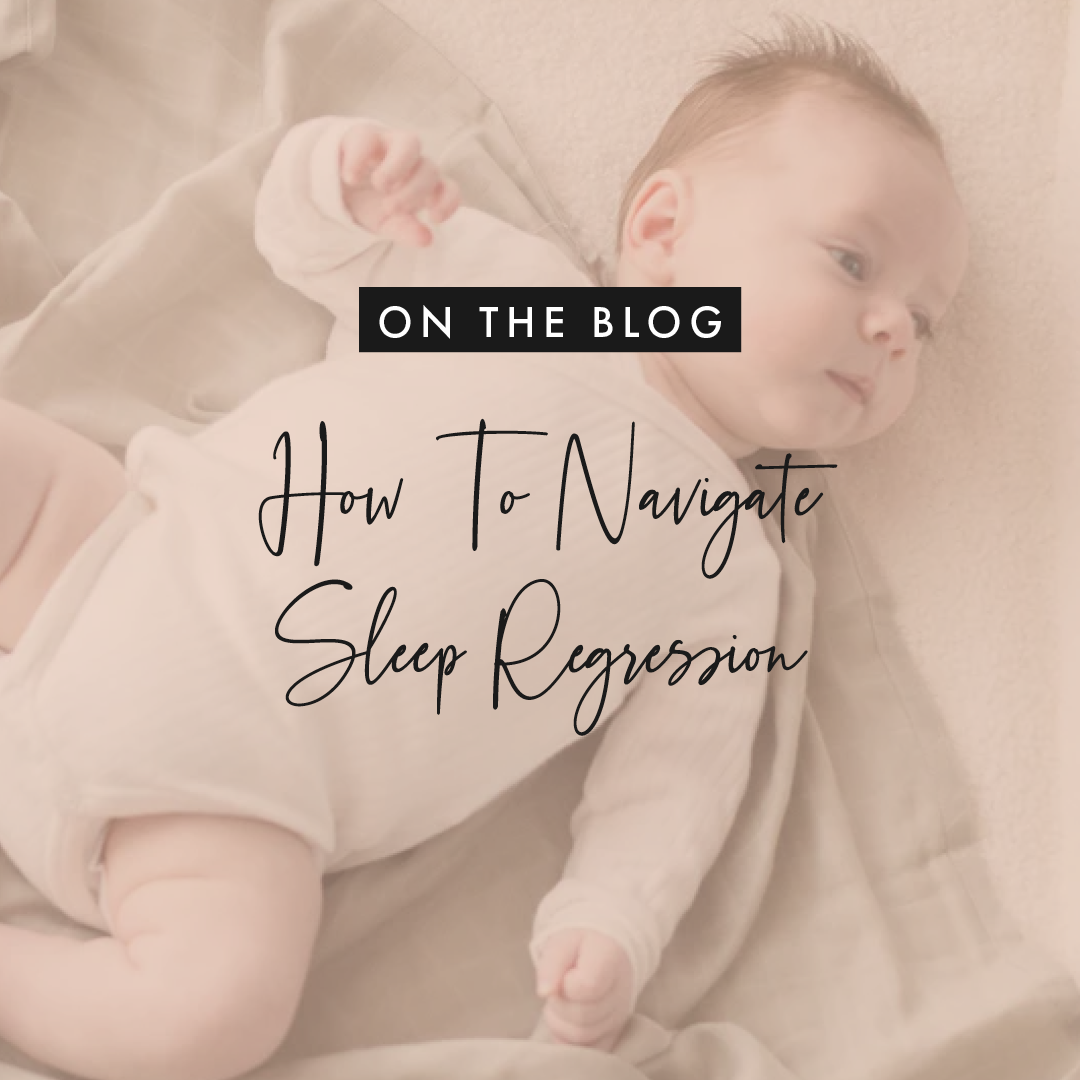How To Navigate Sleep Regression
Sleep regression can be frustrating and challenging for babies and parents alike. While it's relatively common, learning more about it can help you survive it.
Along with a good diet and exercise, sleep is one of the key ingredients that we need in order to function - in fact, we’re supposed to spend one third of our lives doing it. While we do most of our sleeping at night, newborns and small babies require much more than grown ups, and have no distinction between when the sun rises and sets.
For first time parents, adjusting to the sleep schedule - or lack thereof - of a newborn baby is often identified as one of the biggest upheavals of parenthood. While babies under the age of twelve months might sleep anywhere between fourteen and seventeen hours a day, as they need to feed, these naps are rarely any longer than two or three hours at a time.
As babies get older, they may sleep less during the day time, are awake for longer between naps, may wake less during the night, and need less sleep in general. During these periods of development, it’s not uncommon for babies in well established routines to see this all go out the window thanks to sleep regression.
A Beginner’s Guide To Sleep Regression In Babies
What we refer to as sleep regression describes a period of time - often between three and six weeks - when a baby or toddler who has been sleeping well suddenly starts waking at night, taking short naps or skipping naps for no apparent reason.
Parents often describe the event as being caught totally off guard: you think you have conquered all your baby’s sleep challenges, out of nowhere, you’re back to constant night wakings and nonexistent naps, and your baby’s sleep has ‘regressed’. Therefore, it’s easy to feel like you’re going backwards as a parent when this happens to you.
In reality, sleep regression is considered to be relatively common, and can happen to any child as they grow. Typically, sleep regression events happen at around six weeks, four months, eight to nine months, fifteen months, eighteen months and two years of age.
While a number of factors can cause a baby discomfort or make him or her feel anxious or restless enough to lead to sleep regression, common age related milestones that may instigate it include a growth spurt, teething pain, disruptions in routine, traveling or an illness such as a cold or ear infection.
Unfortunately for many bleary-eyed new parents out there who’ve struggled with a sleepless baby, there’s no way to prevent sleep regression as it’s a normal part of baby and toddlerhood. What can do though, is ensure your little one is as safe and comfortable as they can be via the following tactics.
Stick To A Routine - Despite your baby’s objections, try and stick with a semi regular schedule for naps. In addition to this, make sure that your child’s ‘waking windows’ are appropriate for their age, as they may be starting to grow out of taking a certain number of naps per day. Remember that sleep regression won’t last forever, and your support will help things settle.
Set The Tone - Your baby’s nursery or the room where they sleep should be comfortable and associated with down time. If you haven’t explored these options already, make sure that the room isn’t too hot or too cold, you have blackout curtains on hand, and have options for white noise or gentle music to help encourage them to drift off.
Use A Sleep Suit - As your baby gets older, parents should change the way that they wrap them. While you can leave their arms free from around three months old, be sure to stop wrapping them as soon as they’re able to roll. After around six months, your baby will likely resist being wrapped at all and a great alternative is to use a sleeping suit.
While they may look like a giant Christmas sock, a sleeping bag for babies can work wonders when it comes to creating a positive association with sleeping for your child, particularly if they are experiencing a sleep regression. In time, your baby will develop an association with their sleeping suit, meaning that everytime they are put in their bag, it’s a strong cue that it’s time to take a nap - but where can you find them?
A Place To Empower Mamas With Incredible Products
Zoe Sage came from a genuine desire to ease into the transition to motherhood and breastfeeding because - let’s be honest - motherhood is no joke. Owned and operated by a young mother of two, Zoe Sage is all about offering incredible products that actually reduce stress levels instead of increasing them.
From organic swaddles, silicone feeding sets and our signature Five In One Multi Use Mama Cover, we’ve got the essentials of motherhood covered alongside free shipping over $100, a thirty day returns policy, and of course, flexible payment options like ZipPay and Afterpay.
If you’re on the hunt for baby products that actually benefit you and your family, follow us on Instagram to stay updated on new arrivals, or get in touch with us today if you have a query about one of our items available at Zoe Sage.

